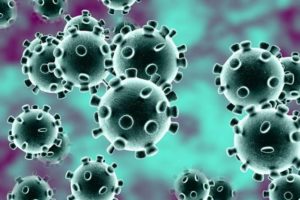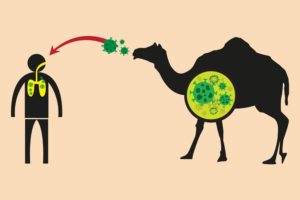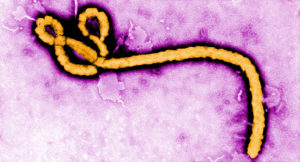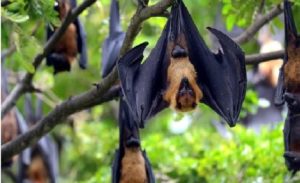India & World UpdatesHappeningsBreaking News
How do viruses get their names?

April 28: The official scientific name of a virus is determined by the International Committee on Taxonomy of Viruses (ICTV) based on their genetic structure to facilitate the development of diagnistic tests, vaccines and medicines. Diseases are named by World Health Organisation (WHO) to enable discussion on disease prevention, spread, transmissibility, severity and treatment. Members choose it based on suggestions sent to them by the scientists who are researching a new virus to figure out how to classify it based on its morphology (i.e. its size and shape), its chemical structure, and the way it reproduces. A virus’s popular name, on the other hand, often starts circulating before the official one can be picked.

 SARS-COV-2: Initially called ‘2019 novel coronavirus’, the virus responsible for COVID-19 was eventually named ‘severe acute respiratory syndrome coronavirus 2 (SARS-COV-2)’ by the ICTV as it is genetically related to the coronavirus responsible for the SARS outbreak in 2003. The disease caused by SARS-COV-2 is called the coronavirus disease or COVID-19.
SARS-COV-2: Initially called ‘2019 novel coronavirus’, the virus responsible for COVID-19 was eventually named ‘severe acute respiratory syndrome coronavirus 2 (SARS-COV-2)’ by the ICTV as it is genetically related to the coronavirus responsible for the SARS outbreak in 2003. The disease caused by SARS-COV-2 is called the coronavirus disease or COVID-19.
 MERS-COV: The Middle-East respiratory syndrome coronavirus of MERS-COV is a novel coronavirus causing a biral respiratory disease, first identified in Saudi Arabia in 2012. As per WHO, studies show that humans are infected with the virus through direct or indirect contact with infected dromendary camels.
MERS-COV: The Middle-East respiratory syndrome coronavirus of MERS-COV is a novel coronavirus causing a biral respiratory disease, first identified in Saudi Arabia in 2012. As per WHO, studies show that humans are infected with the virus through direct or indirect contact with infected dromendary camels.
 EBOLA Virus: As per WHO, the Ebola virus disease first appeared in 1976 in 2 simultaneous outbreaks. One of them occurred in the Democratic Republic of Congo, in a village near the Ebola river, from which the disease takes its name. Fruit bats of the Pteropodidae family are thought to be the natural Ebola virus hosts.
EBOLA Virus: As per WHO, the Ebola virus disease first appeared in 1976 in 2 simultaneous outbreaks. One of them occurred in the Democratic Republic of Congo, in a village near the Ebola river, from which the disease takes its name. Fruit bats of the Pteropodidae family are thought to be the natural Ebola virus hosts.
 NIPAH Virus: As per CDC, the name of the virus originated from Sungai Nipah, a village in the Malaysian Peninsula where pig farmers became ill with encephalitis during an outbreak in 1999. The virus can be transmitted to humans from animals like bats or pigs and in May 2018, a Nipah virus disease (NiV) outbreak was reported from 2 districts in Kerala.
NIPAH Virus: As per CDC, the name of the virus originated from Sungai Nipah, a village in the Malaysian Peninsula where pig farmers became ill with encephalitis during an outbreak in 1999. The virus can be transmitted to humans from animals like bats or pigs and in May 2018, a Nipah virus disease (NiV) outbreak was reported from 2 districts in Kerala.
 H1N1: H1N1 is a type of influenza. a virus which is divided into subtypes based on 2 proteins on the virus surface: hemagglutinin (H) and neuraminidase (N). Swine Flu is a respiratory disease caused by Type A influenza viruses which on being detected in humans are called ‘variant viruses’ such as the H1N1v.
H1N1: H1N1 is a type of influenza. a virus which is divided into subtypes based on 2 proteins on the virus surface: hemagglutinin (H) and neuraminidase (N). Swine Flu is a respiratory disease caused by Type A influenza viruses which on being detected in humans are called ‘variant viruses’ such as the H1N1v.
 BIRD FLU: H5N1 is a type of influenza virus that causes an infectious respiratory disease in birds called avian influenza or bird flu. Avian influenza viruses normally circulate among birds and infections in humans have been associated with direct or indirect contact with infected birds.
BIRD FLU: H5N1 is a type of influenza virus that causes an infectious respiratory disease in birds called avian influenza or bird flu. Avian influenza viruses normally circulate among birds and infections in humans have been associated with direct or indirect contact with infected birds.
 HIV: The Human Immunodeficiency Virus or HIV is known to cause AIDS (Acquired Immuno Deficiency Syndrome) in humans and has led to more than 32 million deaths so far, as per WHO estimates. The virus gradually makes patients immunodeficient, by targeting the body’s immune system and weakening their defence systems against infections and some types of cancer.
HIV: The Human Immunodeficiency Virus or HIV is known to cause AIDS (Acquired Immuno Deficiency Syndrome) in humans and has led to more than 32 million deaths so far, as per WHO estimates. The virus gradually makes patients immunodeficient, by targeting the body’s immune system and weakening their defence systems against infections and some types of cancer.





